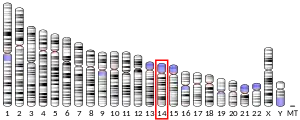| NPAS3 | |||||||||||||||||||||||||||||||||||||||||||||||||||
|---|---|---|---|---|---|---|---|---|---|---|---|---|---|---|---|---|---|---|---|---|---|---|---|---|---|---|---|---|---|---|---|---|---|---|---|---|---|---|---|---|---|---|---|---|---|---|---|---|---|---|---|
| Identifiers | |||||||||||||||||||||||||||||||||||||||||||||||||||
| Aliases | NPAS3, neuronal PAS domain protein 3, MOP6, PASD6, bHLHe12 | ||||||||||||||||||||||||||||||||||||||||||||||||||
| External IDs | OMIM: 609430 MGI: 1351610 HomoloGene: 8461 GeneCards: NPAS3 | ||||||||||||||||||||||||||||||||||||||||||||||||||
| |||||||||||||||||||||||||||||||||||||||||||||||||||
| |||||||||||||||||||||||||||||||||||||||||||||||||||
| |||||||||||||||||||||||||||||||||||||||||||||||||||
| |||||||||||||||||||||||||||||||||||||||||||||||||||
| |||||||||||||||||||||||||||||||||||||||||||||||||||
| Wikidata | |||||||||||||||||||||||||||||||||||||||||||||||||||
| |||||||||||||||||||||||||||||||||||||||||||||||||||
NPAS3 or Neuronal PAS domain protein 3 is a brain-enriched transcription factor belonging to the bHLH-PAS superfamily of transcription factors, the members of which carry out diverse functions, including circadian oscillations, neurogenesis, toxin metabolism, hypoxia, and tracheal development. NPAS3 contains basic helix-loop-helix structural motif and PAS domain, like the other proteins in the superfamily.
Function
NPAS3 is also known as human accelerated region 21. It may, therefore, have played a key role in differentiating humans from apes.[5]
NPAS1 and NPAS3-deficient mice display behavioral abnormalities typical to the animal models of schizophrenia.[6]
According to the same study, NPAS1 and NPAS3 disruption leads to reduced expression of reelin, which is also consistently found to be reduced in the brains of human patients with schizophrenia and psychotic bipolar disorder. Among the 49 genomic regions that undergone rapid changes in humans compared with their evolutionary ancestors, NPAS3 was found to be located in the region 21.[5]
Clinical significance
Disruption of NPAS3 was found in one family affected by schizophrenia[7] and NPAS3 gene is thought to be associated with psychiatric illness and learning disability.[8][9] In a genetic study of several hundred subjects conducted in 2008, interacting haplotypes at the NPAS3 locus were found to affect the risk of schizophrenia and bipolar disorder.[10]
In a pharmacogenetical study, polymorphisms in NPAS3 gene were highly associated with response to iloperidone, a proposed atypical antipsychotic.[11]
References
- 1 2 3 GRCh38: Ensembl release 89: ENSG00000151322 - Ensembl, May 2017
- 1 2 3 GRCm38: Ensembl release 89: ENSMUSG00000021010 - Ensembl, May 2017
- ↑ "Human PubMed Reference:". National Center for Biotechnology Information, U.S. National Library of Medicine.
- ↑ "Mouse PubMed Reference:". National Center for Biotechnology Information, U.S. National Library of Medicine.
- 1 2 Pollard KS, Salama SR, Lambert N, Lambot MA, Coppens S, Pedersen JS, Katzman S, King B, Onodera C, Siepel A, Kern AD, Dehay C, Igel H, Ares M, Vanderhaeghen P, Haussler D (Sep 2006). "An RNA gene expressed during cortical development evolved rapidly in humans" (PDF). Nature. 443 (7108): 167–72. Bibcode:2006Natur.443..167P. doi:10.1038/nature05113. PMID 16915236. S2CID 18107797.
- ↑ Erbel-Sieler C, Dudley C, Zhou Y, Wu X, Estill SJ, Han T, Diaz-Arrastia R, Brunskill EW, Potter SS, McKnight SL (Sep 2004). "Behavioral and regulatory abnormalities in mice deficient in the NPAS1 and NPAS3 transcription factors". Proceedings of the National Academy of Sciences of the United States of America. 101 (37): 13648–53. Bibcode:2004PNAS..10113648E. doi:10.1073/pnas.0405310101. PMC 518807. PMID 15347806.
- ↑ Kamnasaran D, Muir WJ, Ferguson-Smith MA, Cox DW (May 2003). "Disruption of the neuronal PAS3 gene in a family affected with schizophrenia". Journal of Medical Genetics. 40 (5): 325–32. doi:10.1136/jmg.40.5.325. PMC 1735455. PMID 12746393.
- ↑ Pickard BS, Malloy MP, Porteous DJ, Blackwood DH, Muir WJ (Jul 2005). "Disruption of a brain transcription factor, NPAS3, is associated with schizophrenia and learning disability". American Journal of Medical Genetics Part B. 136B (1): 26–32. doi:10.1002/ajmg.b.30204. PMID 15924306. S2CID 33879828.
- ↑ Pickard BS, Pieper AA, Porteous DJ, Blackwood DH, Muir WJ (2006). "The NPAS3 gene--emerging evidence for a role in psychiatric illness". Annals of Medicine. 38 (6): 439–48. doi:10.1080/07853890600946500. PMID 17008307.
- ↑ Pickard BS, Christoforou A, Thomson PA, Fawkes A, Evans KL, Morris SW, Porteous DJ, Blackwood DH, Muir WJ (Sep 2009). "Interacting haplotypes at the NPAS3 locus alter risk of schizophrenia and bipolar disorder". Molecular Psychiatry. 14 (9): 874–84. doi:10.1038/mp.2008.24. PMID 18317462.
- ↑ Lavedan C, Volpi S, Mack K, et al. Whole-genome association study identifies polymorphisms in the NPAS3 gene associated with super-response to iloperidone treatment in patients with schizophrenia. Program and abstracts of the 57th Annual Meeting of the American Society of Human Genetics; October 23–27, 2007; San Diego, California. Abstract 1035/T
Further reading
- Kamnasaran D, Muir WJ, Ferguson-Smith MA, Cox DW (May 2003). "Disruption of the neuronal PAS3 gene in a family affected with schizophrenia". Journal of Medical Genetics. 40 (5): 325–32. doi:10.1136/jmg.40.5.325. PMC 1735455. PMID 12746393.
- Moreira F, Kiehl TR, So K, Ajeawung NF, Honculada C, Gould P, Pieper RO, Kamnasaran D (Jul 2011). "NPAS3 demonstrates features of a tumor suppressive role in driving the progression of Astrocytomas". The American Journal of Pathology. 179 (1): 462–76. doi:10.1016/j.ajpath.2011.03.044. PMC 3123785. PMID 21703424.
- Kamnasaran D, Ajewung N, Rana M, Gould P (2010). "393 NPAS3 is a novel late-stage acting progression factor in gliomas with tumour suppressive functions". European Journal of Cancer Supplements. 8 (5): 100. doi:10.1016/S1359-6349(10)71194-0.
- Long PM, Wesley UV, Jaworski DM (2010). "CB-01. Regulation of aminoacylase expression in neuroblastoma". Neuro-Oncology. 12 (Supplement 4): iv7–iv25. doi:10.1093/neuonc/noq116.s2. PMC 3199169.
- Wong J, Duncan CE, Beveridge NJ, Webster MJ, Cairns MJ, Weickert CS (Mar 2013). "Expression of NPAS3 in the human cortex and evidence of its posttranscriptional regulation by miR-17 during development, with implications for schizophrenia". Schizophrenia Bulletin. 39 (2): 396–406. doi:10.1093/schbul/sbr177. PMC 3576160. PMID 22228753.
- Shin J, Jeong HY, Lee KE, Kim J (Sep 2010). "Isolation and Characterization of Chicken NPAS3". Experimental Neurobiology. 19 (2): 71–4. doi:10.5607/en.2010.19.2.71. PMC 3214776. PMID 22110344.
- Fonseca DJ, Prada CF, Siza LM, Angel D, Gomez YM, Restrepo CM, Douben H, Rivadeneira F, de Klein A, Laissue P (Mar 2012). "A de novo 14q12q13.3 interstitial deletion in a patient affected by a severe neurodevelopmental disorder of unknown origin". American Journal of Medical Genetics Part A. 158A (3): 689–93. doi:10.1002/ajmg.a.35215. PMID 22315208. S2CID 9506804.



